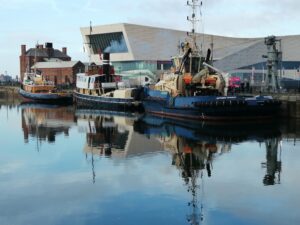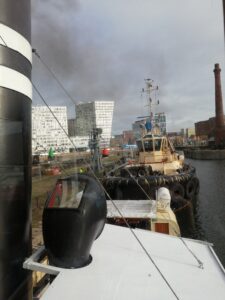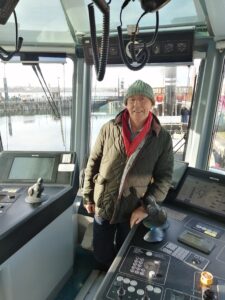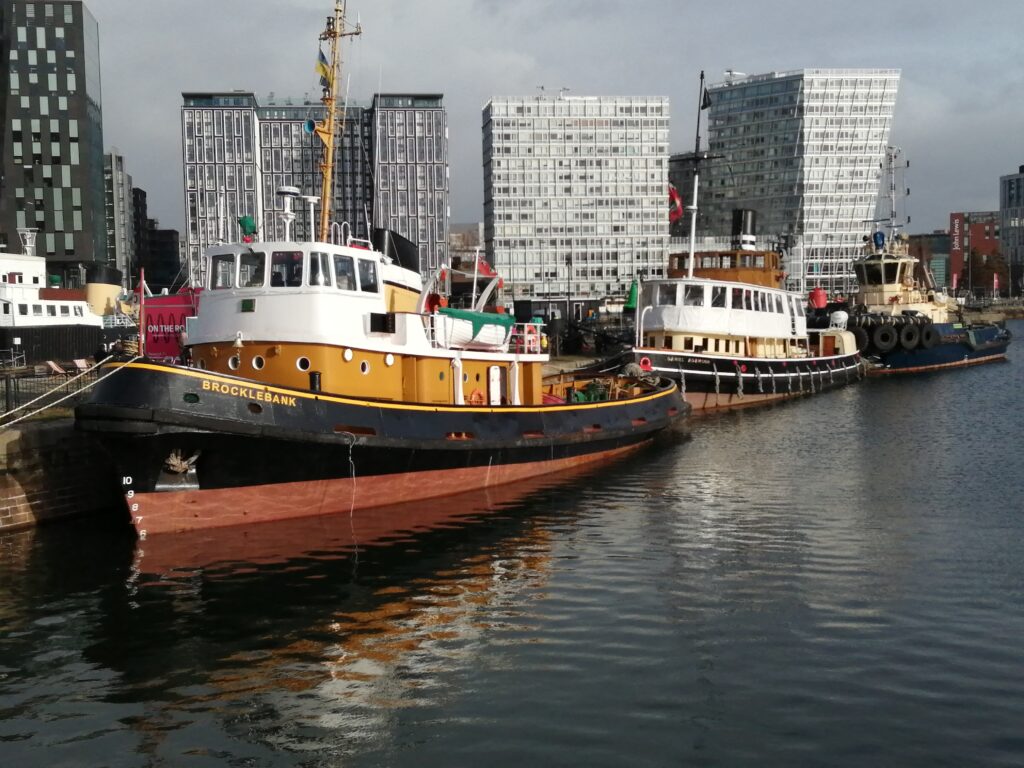THE Royal Albert Dock complex is a fine sight these days, and a major tourist hub with its museums, galleries, shops and accommodation.
What it lacks is the essence of its original purpose: ships, boats, vessels, barges, as among life’s more depressing views are those of empty docks and basins.
The shipless situation is about to get worse with National Museums Liverpool plan to scrap the permanently displayed historic sailing ship De Wadden, which was the last cargo sailing ship to operate in and out of Liverpool, but is now controversially deemed beyond repair as it sits crumbling in a graving dock.
That’s why it was so heart-warming to see a magnificent flotilla consisting of three generations of Mersey tugboats tied up in a row in Canning Half-Tide Dock alongside the decrepit De Wadden, clocking up 166 years of technological advance between them.
generations of Mersey tugboats tied up in a row in Canning Half-Tide Dock alongside the decrepit De Wadden, clocking up 166 years of technological advance between them.
These were the preserved coal-burning centenarian Daniel Adamson (aka ‘The Danny’), of 1903, and the diesel-powered Brocklebank, of 1964. They were joined by the latest and by far the most powerful Svitzer Trident of 2016, which is very much in revenue service and biofuelled by HVO (Hydrotreated Vegetable Oil – known as ‘green diesel’).
 While looking lovely, these vital players in the past and present maritime world were not just sitting pretty. Their purpose was to educate and inspire a new generation of young people entering the maritime world.
While looking lovely, these vital players in the past and present maritime world were not just sitting pretty. Their purpose was to educate and inspire a new generation of young people entering the maritime world.
The Daniel Adamson Preservation Society is partnering with the Canal & River Trust, Liverpool John Moores University, and National Museums Liverpool to equip college students with practical skills around maritime sustainability and vessel design.
Touring the tugboats were 36 top engineering students from Hugh Baird College in Bootle, Wirral Met in Birkenhead, and Riverside and Cronton Colleges in Widnes and Runcorn.
The Maritime Heritage – Maritime Futures programme will educate the students about Liverpool’s importance as a global port city and its rich heritage as a centre for innovative maritime technologies.
Liverpool’s importance as a global port city and its rich heritage as a centre for innovative maritime technologies.
The students will learn about how the region’s maritime sector is rapidly greening its operations, and what kind of jobs and opportunities exist.
Cathriona Bourke, Daniel Adamson Preservation Society collaborations and partnership manager who devised the event, said: “The Danny has a knack for bringing people together and forging a sense of community – it is how she survived.
“This event is an amazing opportunity as the Port of Liverpool is so important historically. Many young people do not know a lot about the sheer scale of operations here and that 20 per cent of UK imports arrive via Liverpool, or that we’re leading decarbonisation.
 “By introducing these young engineers to their maritime heritage as well as the vast potential on their doorstep we are giving them a sense of pride and belonging which we hope will equip them with new skills, ambitions, and confidence in what they can achieve.”
“By introducing these young engineers to their maritime heritage as well as the vast potential on their doorstep we are giving them a sense of pride and belonging which we hope will equip them with new skills, ambitions, and confidence in what they can achieve.”
The programme is supported by expertise from key regional maritime players including Svitzer, the Peel Ports Group, Safeguard Engineering, Liverpool Pilots, and Cammell Laird, backed by National Lottery Heritage Funding.
Thanks must also go to the Capt Dan Cross, Svitzer tug master, for involving his employers in the event, and allowing me onto Svitzer Trident’s bridge (I didn’t touch anything), seen above, not to mention saving Daniel Adamson from the scrapyard.
master, for involving his employers in the event, and allowing me onto Svitzer Trident’s bridge (I didn’t touch anything), seen above, not to mention saving Daniel Adamson from the scrapyard.
Capt Cross, seen right aboard Daniel Adamson, said: “Svitzer has created a pathway to being carbon neutral and part of that journey involves switching our fleet of 60 tugs to burning HVO from diesel.”
The programme ends in June 2024 witht the ‘Float Your Boat’ event in which student teams will use the vessel prototype they have designed and built to deliver the most cargo across Salthouse Dock (between Royal Albert Dock and The Strand) at the lowest environmental and economic cost.

